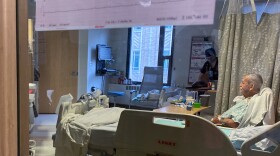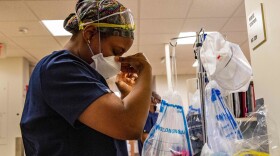
Will Stone
Will Stone is a former reporter at KUNR Public Radio.
-
More than 900,000 people in the U.S. have now died from COVID-19, but that figure doesn't capture the full impact of the disease.
-
Slammed by COVID-19, many U.S. hospitals have put off essential procedures. Delays are leading to consequences like heart attacks and sending people to emergency rooms to get care.
-
The omicron surge is derailing medical care for all kinds of patients. While it's hard to quantify, doctors say many patients are suffering because of canceled surgeries and clogged hospitals.
-
People who get infected with omicron are less likely to go to the hospital, go on a ventilator or die. But with the current huge volume of patients, hospitals are still struggling to treat them all.
-
This latest coronavirus surge has set back a return to "normal." COVID is never going away -– and that has implications for hospitals, schools and public health officials.
-
Omicron has pushed U.S. hospitalizations to record levels, but what does an omicron illness actually look like? And who is getting very sick? Doctors around the country describe what they are seeing.
-
A Seattle hospital confronts the omicron surge. While COVID-19 patients aren't as sick compared to earlier waves, there is a record number of patients overall, and not enough staff to care for them.
-
Omicron may cause milder disease, but the sheer number of patients makes this wave far worse for the health care system. With packed emergency rooms, patients can wait days to get moved to a bed.
-
In the U.S., more people are hospitalized for COVID-19 than at any other point in the pandemic. The omicron variant has slammed ERs, but doctors say this surge feels different than earlier ones.
-
There are more patients and, in some places, not enough health care workers to go around. Research shows the crowding will impact care and increase mortality for all patients.





